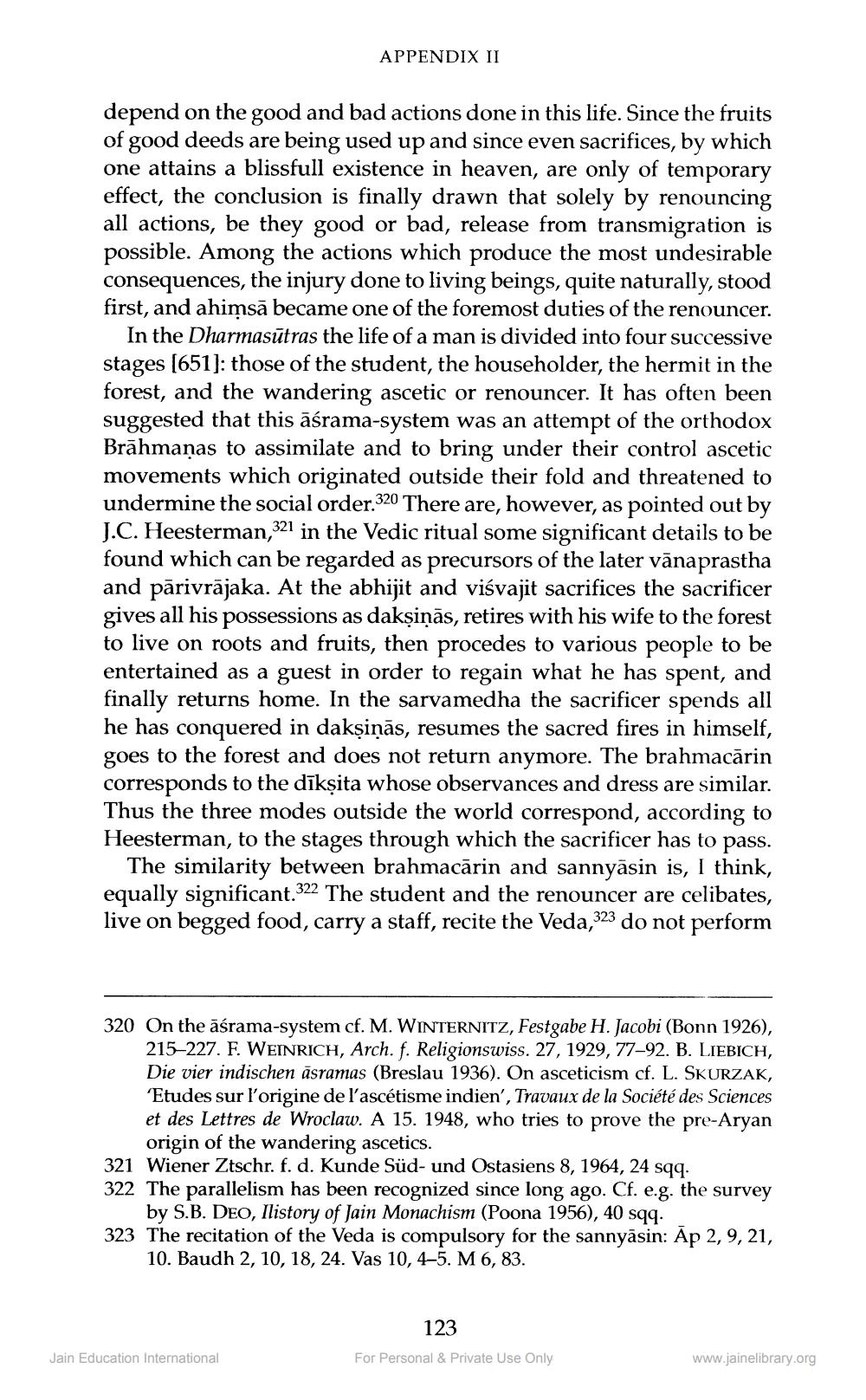________________
APPENDIX II
depend on the good and bad actions done in this life. Since the fruits of good deeds are being used up and since even sacrifices, by which one attains a blissfull existence in heaven, are only of temporary effect, the conclusion is finally drawn that solely by renouncing all actions, be they good or bad, release from transmigration is possible. Among the actions which produce the most undesirable consequences, the injury done to living beings, quite naturally, stood first, and ahimsā became one of the foremost duties of the renouncer.
In the Dharmasūtras the life of a man is divided into four successive stages [651]: those of the student, the householder, the hermit in the forest, and the wandering ascetic or renouncer. It has often been suggested that this āśrama-system was an attempt of the orthodox Brāhmanas to assimilate and to bring under their control ascetic movements which originated outside their fold and threatened to undermine the social order.320 There are, however, as pointed out by J.C. Heesterman,321 in the Vedic ritual some significant details to be found which can be regarded as precursors of the later vānaprastha and pārivrājaka. At the abhijit and visvajit sacrifices the sacrificer gives all his possessions as dakşiņās, retires with his wife to the forest to live on roots and fruits, then procedes to various people to be entertained as a guest in order to regain what he has spent, and finally returns home. In the sarvamedha the sacrificer spends all he has conquered in dakşiņās, resumes the sacred fires in himself, goes to the forest and does not return anymore. The brahmacārin corresponds to the dīkṣita whose observances and dress are similar. Thus the three modes outside the world correspond, according to Heesterman, to the stages through which the sacrificer has to pass.
The similarity between brahmacārin and sannyāsin is, I think, equally significant.322 The student and the renouncer are celibates, live on begged food, carry a staff, recite the Veda,323 do not perform
320 On the āśrama-system cf. M. WINTERNITZ, Festgabe H. Jacobi (Bonn 1926),
215-227. F. WEINRICH, Arch. f. Religionswiss. 27, 1929, 77–92. B. LIEBICH, Die vier indischen asramas (Breslau 1936). On asceticism cf. L. SKURZAK, 'Etudes sur l'origine de l'ascétisme indien', Travaux de la Société des Sciences et des Lettres de Wroclaw. A 15. 1948, who tries to prove the pre-Aryan
origin of the wandering ascetics. 321 Wiener Ztschr. f. d. Kunde Süd- und Ostasiens 8, 1964, 24 sqq. 322 The parallelism has been recognized since long ago. Cf. e.g. the survey
by S.B. DEO, llistory of Jain Monachism (Poona 1956), 40 sqq. 323 The recitation of the Veda is compulsory for the sannyāsin: Ap 2, 9, 21,
10. Baudh 2, 10, 18, 24. Vas 10,4-5. M 6,83.
123 For Personal & Private Use Only
Jain Education International
www.jainelibrary.org




